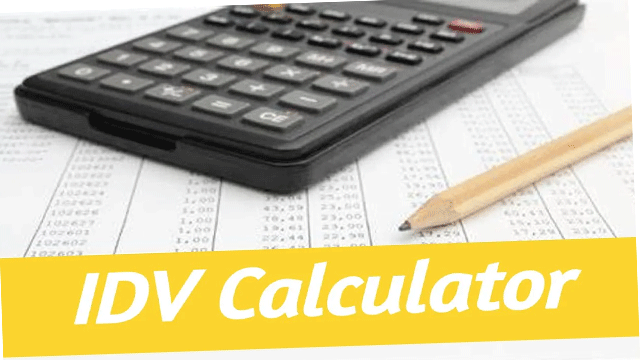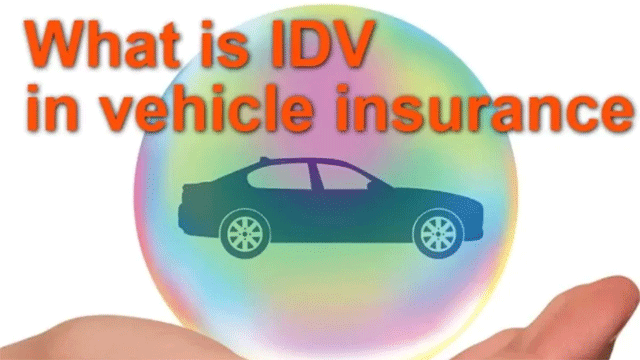Understanding IDV 2024
Understanding IDV In the realm of car ownership, safeguarding your prized possession is paramount. Car insurance acts as a financial shield, protecting you from the unforeseen expenses arising from accidents, theft, or damage. But within this shield lies a crucial concept – Insured Declared Value (IDV). Understanding IDV is essential for making informed decisions about your car insurance policy and ensuring you receive the right compensation in case of a mishap.
IDV Demystified: What it Means and Why it Matters
IDV stands for Insured Declared Value. In simpler terms, it represents the maximum sum assured that your car insurance company will pay you if your car is stolen or suffers irreparable damage in an accident. Essentially, it’s the predetermined market value of your car at the time of insurance. This value serves as the benchmark for claim settlements, influencing both the premium you pay and the payout you receive.
Calculating IDV: Unveiling the Formula
While the insurance company determines the IDV, it’s not a shrouded figure. Here’s a breakdown of the factors that contribute to calculating your car’s IDV:
- Manufacturer’s Listed Selling Price (Ex-showroom): This is the price you pay for the car when you buy it from the dealership, excluding taxes and registration charges. It forms the base value for calculating IDV.
- Depreciation: As your car ages, its market value depreciates. The insurance company factors in this depreciation rate based on IRDAI (Insurance Regulatory and Development Authority of India) guidelines. The older the car, the higher the depreciation, and consequently, the lower the IDV.
- Car Variants and Model: Different car models and variants within a model have varying IDVs due to differences in features, engine capacity, and other specifications.
- Add-on Covers: If you’ve opted for add-on covers like alloy wheel protection or an infotainment system cover, their value might be added to the IDV in some cases.

Here’s a simplified formula for IDV calculation:
IDV = (Ex-showroom Price - Depreciation) + Value of Add-on Covers (if applicable)IDV and Your Car Insurance Premium: A Balancing Act
The IDV you choose significantly impacts your car insurance premium. A higher IDV translates to a higher perceived value of your car by the insurer. Consequently, the premium amount also increases. Conversely, opting for a lower IDV reduces your premium but might result in a lower payout in case of a claim.
Finding the IDV Sweet Spot: Striking the Right Balance
The ideal IDV lies in striking a balance between affordability and adequate coverage. Here are some pointers to guide you:
- Consider Your Car’s Age and Condition: For a new car, a higher IDV close to the ex-showroom price is recommended. As the car ages, you can gradually decrease the IDV to reflect its depreciated value.
- Market Value Research: Conduct online research or consult car valuation portals to understand the current market value of your car model and variant. This will give you a realistic picture of the appropriate IDV range.
- Weighing Premium Outlay vs. Coverage: Evaluate your financial situation and risk tolerance. If you’re comfortable with a slightly higher premium, a higher IDV offers broader coverage. On the other hand, if budget is a prime concern, you might consider a lower IDV, but be prepared for a potentially lower claim payout.
Important Considerations Regarding IDV
- IDV is Not the Market Value: While IDV reflects the market value to a great extent, it might not be the exact equivalent. It’s crucial to understand this distinction.
- IDV Updates at Renewal: As your car ages, its IDV needs to be adjusted to reflect the depreciation. The insurer typically suggests a revised IDV during policy renewal. You can choose to accept it or propose a different value based on your research.
Beyond IDV: Additional Factors Influencing Claim Settlements
It’s essential to remember that IDV is just one factor influencing claim settlements. Here are some other aspects that come into play:
- Claim Type: The type of claim – theft, total loss due to accident, or partial damage – determines the payout calculation.
- Depreciation for Partial Damage: In case of partial damage repairs, depreciation on spare parts is applied, further reducing the final claim amount you receive.
- Zero Depreciation Cover (Optional Add-on): This add-on cover waives depreciation on parts replaced during repairs, ensuring you receive the full cost of repairs for specific parts (excluding wear and tear items).
Empowering Car Insurance Decisions: A Deep Dive into IDV (Continued)
Having established the foundational aspects of IDV, let’s delve deeper into some crucial considerations and explore strategies to optimize your car insurance coverage.
Understanding Depreciation and Its Impact
Depreciation is a significant factor affecting IDV. As your car ages, its market value diminishes. The insurance company considers a standard depreciation rate based on IRDAI guidelines. This depreciation is deducted from the ex-showroom price to arrive at the IDV. Here’s a breakdown of how depreciation typically works:
- New Cars: For brand new cars, the depreciation applied in the first year is usually around 5%.
- Subsequent Years: The depreciation rate progressively increases with each passing year. It can vary depending on the car’s segment (luxury cars typically depreciate faster) and brand.
Strategies for Choosing the Right IDV
Here are some effective strategies to guide you in selecting the optimal IDV for your car insurance:
- Maintaining Updated IDV: Regularly review and update your IDV at policy renewal to reflect your car’s depreciated value. This ensures you neither overpay premiums nor face an under-insured situation in case of a claim.
- Considering Geographic Location: Car market values can vary across regions. If you reside in an area with a higher market value for your car model, you might consider a slightly higher IDV to ensure adequate coverage.
- Future Modifications: If you plan to add expensive aftermarket modifications like alloy wheels or a premium sound system, consider including their value in the IDV during the next policy renewal.
Zero Depreciation Cover: A Boon for New Car Owners
For owners of new cars, opting for a Zero Depreciation Cover (also called Nil Depreciation or Bumper-to-Bumper Cover) can be particularly beneficial. This add-on cover eliminates depreciation application on replaced parts during repairs for partial damage claims. This ensures you receive the complete cost of repairs for specific parts (excluding wear and tear items) up to the policy period (typically 3 or 5 years). While this add-on increases the premium, it offers significant advantages, especially for pricier car models.

Advantages and Considerations of Zero Depreciation Cover
- Enhanced Coverage: Zero Depreciation ensures you receive the complete replacement cost of parts, minimizing your financial burden in case of repairs.
- Peace of Mind: This cover offers valuable peace of mind, knowing you’ll receive the maximum possible payout for repairs without depreciation deductions.
- Premium Impact: Zero Depreciation comes at an additional premium cost. Weigh the financial benefit of potentially higher claim payouts against the increased premium before opting for this add-on.
Claiming Your Due: Understanding the Claim Settlement Process
In the unfortunate event of a claim, understanding the claim settlement process becomes crucial. Here’s a simplified overview:
- Intimate the Claim: Immediately inform your insurance company about the incident and file a claim. Provide all necessary documentation as per the insurer’s requirements.
- Survey and Assessment: A surveyor appointed by the insurance company will inspect the damage and assess the repair cost. They will consider factors like IDV, depreciation, and repair estimates from authorized workshops.
- Claim Settlement: Based on the surveyor’s report and policy terms, the insurance company will determine the final claim amount.
Negotiating Your Claim Settlement
While the insurer determines the initial claim settlement amount, you might have room for negotiation, particularly for partial damage claims. Here are some pointers:
- Gather Repair Estimates: Obtain repair estimates from authorized workshops or service centers. This can strengthen your case if the insurer’s offered amount seems inadequate.
- Highlight Genuine Parts: Emphasize the importance of using genuine spare parts for repairs, especially if the insurer suggests using non-genuine or aftermarket parts to reduce costs.
Maintaining a Healthy Insurance Relationship
Here are some tips to foster a positive relationship with your car insurance provider:
- Transparency and Honesty: Always maintain transparency and honesty when communicating with your insurance company, especially during the claim process.
- Renewal Reminders: Set reminders for policy renewals to avoid coverage lapses.
- Safe Driving Habits: Practice safe driving habits to minimize the risk of accidents and maintain a good driving record. This can potentially lead to lower premiums in the future.
Conclusion: IDV – The Bedrock of Smart Car Insurance
Understanding IDV empowers you to make informed choices when purchasing car insurance. By considering the factors discussed in this article, you can strike a balance between affordability and adequate coverage. Remember, IDV is just one facet of a comprehensive car insurance policy. Explore add-on covers like Zero Depreciation to enhance your protection, and maintain a healthy relationship with your insurer for a smooth claims experience. With informed decisions and responsible driving practices, you can ensure a secure and financially protected journey on the road.
Read Also :A Guide to Car Insurance for College Students 2024
FAQ :
What is IDV in car insurance?
IDV stands for Insured Declared Value. It represents the maximum sum assured your insurance company will pay you if your car is stolen or suffers irreparable damage in an accident. In simpler terms, it’s the predetermined market value of your car at the time of insurance.
How is IDV calculated?
Here’s a simplified formula for IDV calculation:IDV = (Ex-showroom Price - Depreciation) + Value of Add-on Covers (if applicable)
The ex-showroom price, depreciation rate (based on car’s age), and add-on cover values (if any) are considered to determine the IDV.
How does IDV affect my car insurance premium?
A higher IDV translates to a higher perceived value of your car by the insurer, resulting in a higher premium. Conversely, opting for a lower IDV reduces your premium but might result in a lower payout in case of a claim.
How do I choose the right IDV?
Consider your car’s age and condition, current market value, and budget when choosing the IDV. A balance between affordability and adequate coverage is ideal.